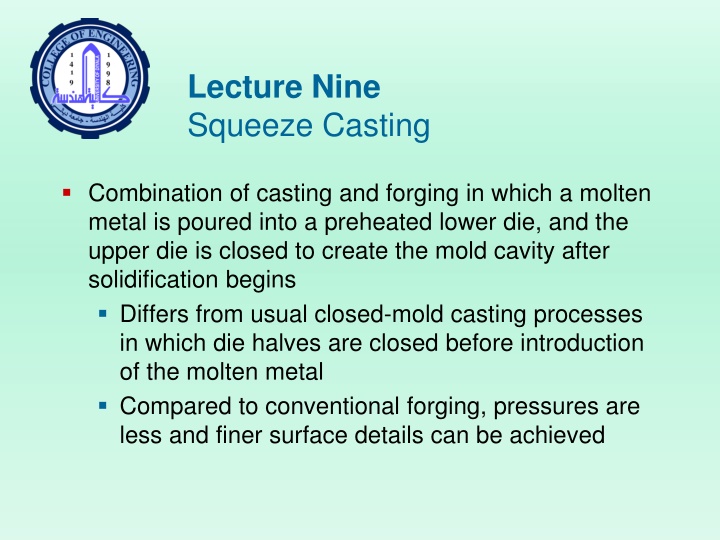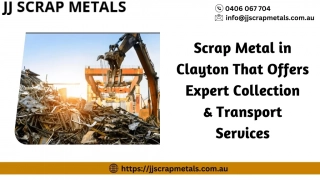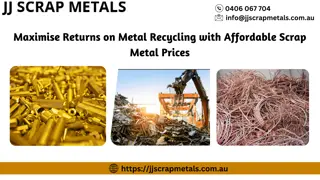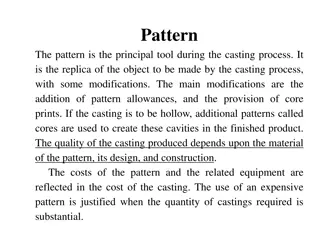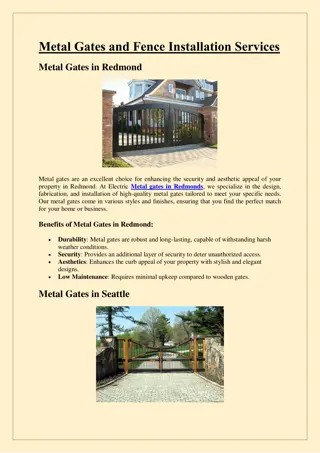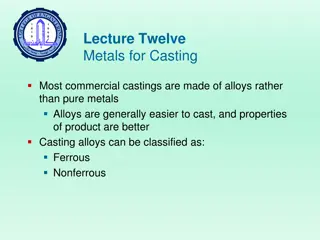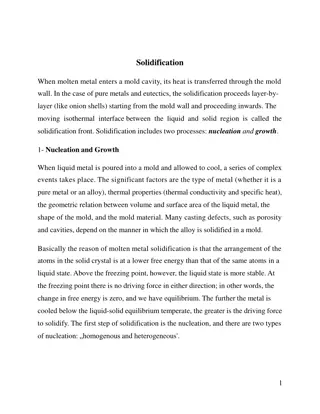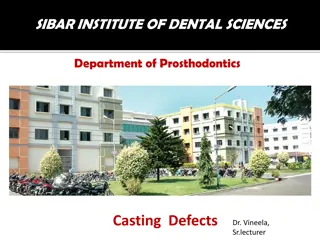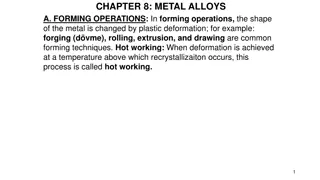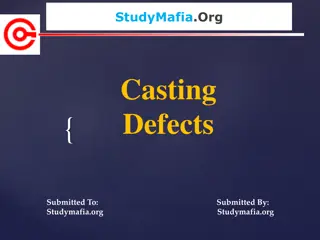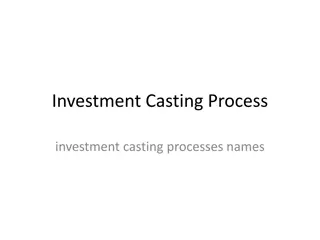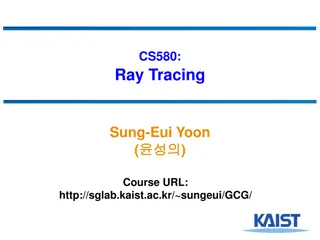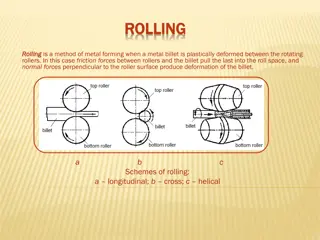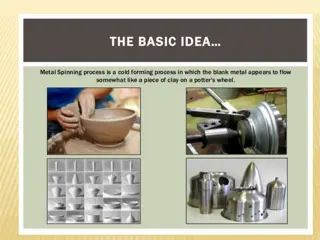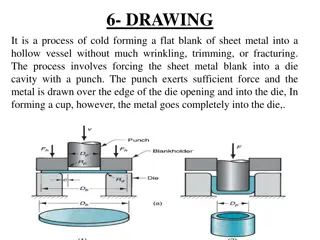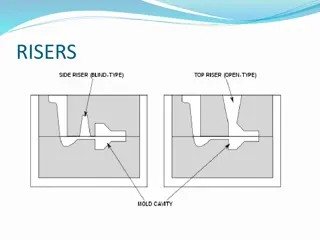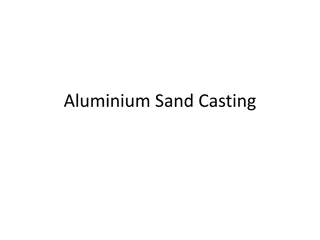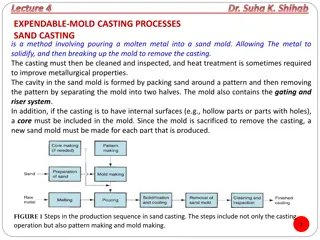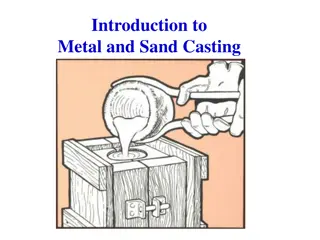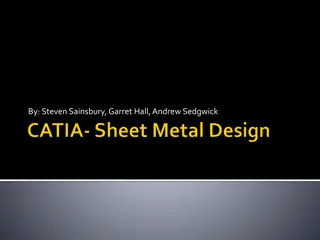Advanced Metal Casting Techniques
Squeeze casting combines casting and forging, achieving finer surface details. Semi-solid metal casting allows for complex geometries and high-strength parts. Centrifugal casting utilizes rotational forces to distribute molten metal, with variants like true centrifugal casting producing tubular parts. Explore the advantages and applications of semi-centrifugal casting.
Download Presentation

Please find below an Image/Link to download the presentation.
The content on the website is provided AS IS for your information and personal use only. It may not be sold, licensed, or shared on other websites without obtaining consent from the author.If you encounter any issues during the download, it is possible that the publisher has removed the file from their server.
You are allowed to download the files provided on this website for personal or commercial use, subject to the condition that they are used lawfully. All files are the property of their respective owners.
The content on the website is provided AS IS for your information and personal use only. It may not be sold, licensed, or shared on other websites without obtaining consent from the author.
E N D
Presentation Transcript
Lecture Nine Squeeze Casting Combination of casting and forging in which a molten metal is poured into a preheated lower die, and the upper die is closed to create the mold cavity after solidification begins Differs from usual closed-mold casting processes in which die halves are closed before introduction of the molten metal Compared to conventional forging, pressures are less and finer surface details can be achieved
Semi-Solid Metal Casting Family of net-shape and near net-shape processes performed on metal alloys at temperatures between liquidus and solidus Thus, the alloy is a mixture of solid and molten metals during casting (mushy state) To flow properly, the mixture must consist of solid metal globules in a liquid Achieved by stirring the mixture to prevent dendrite formation
Semi-Solid Metal Casting: Advantages Complex part geometries Thin part walls possible Close tolerances Zero or low porosity, resulting in high strength of the casting
Centrifugal Casting A family of casting processes in which the mold is rotated at high speed so centrifugal force distributes molten metal to outer regions of die cavity The group includes: True centrifugal casting Semicentrifugal casting Centrifuge casting
True Centrifugal Casting Molten metal is poured into rotating mold to produce a tubular part In some operations, mold rotation commences after pouring rather than before Parts: pipes, tubes, bushings, and rings Outside shape of casting can be round, octagonal, hexagonal, etc , but inside shape is (theoretically) perfectly round, due to radially symmetric forces
True Centrifugal Casting Setup for true centrifugal casting
Semicentrifugal Casting Centrifugal force is used to produce solid castings rather than tubular parts Molds use risers at center to supply feed metal Density of metal in final casting is greater in outer sections than at center of rotation Often used on parts in which center of casting is machined away, thus eliminating the portion where quality is lowest Examples: wheels and pulleys
Centrifuge Casting Mold is designed with part cavities located away from axis of rotation, so molten metal poured into mold is distributed to these cavities by centrifugal force Used for smaller parts Radial symmetry of part is not required as in other centrifugal casting methods
Centrifuge Casting (a) The process and (b) one of the parts cast
Furnaces for Casting Processes Furnaces most commonly used in foundries: Cupolas Direct fuel-fired furnaces Crucible furnaces Electric-arc furnaces Induction furnaces
